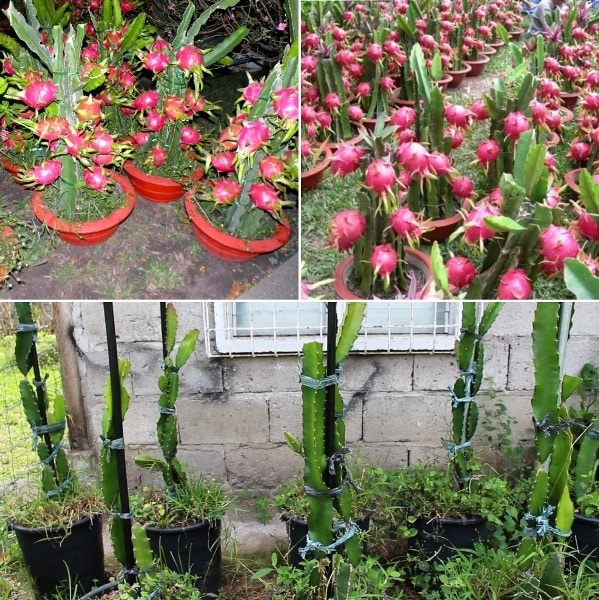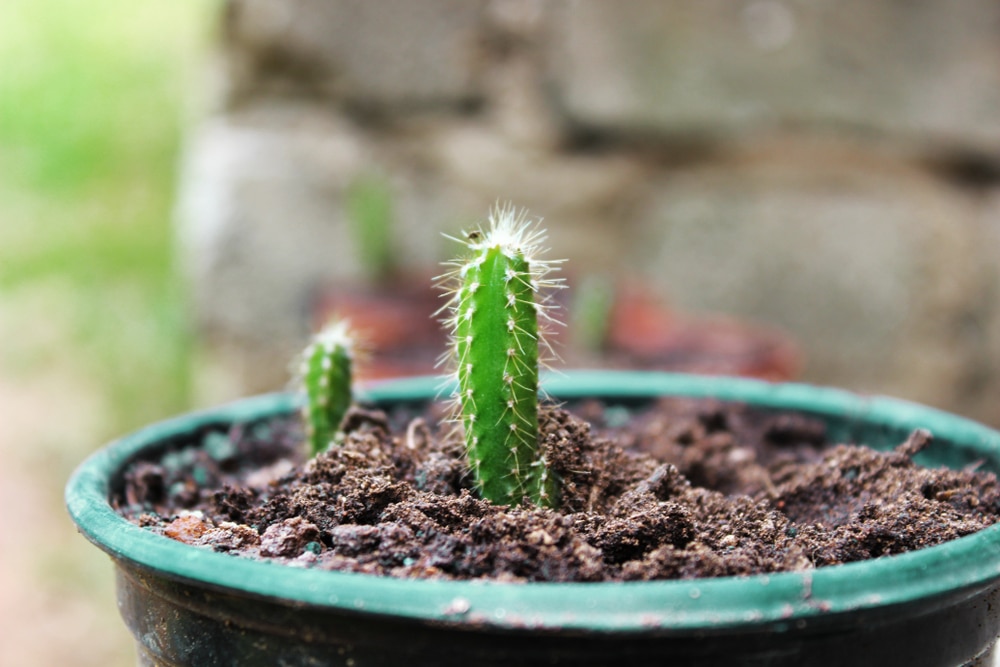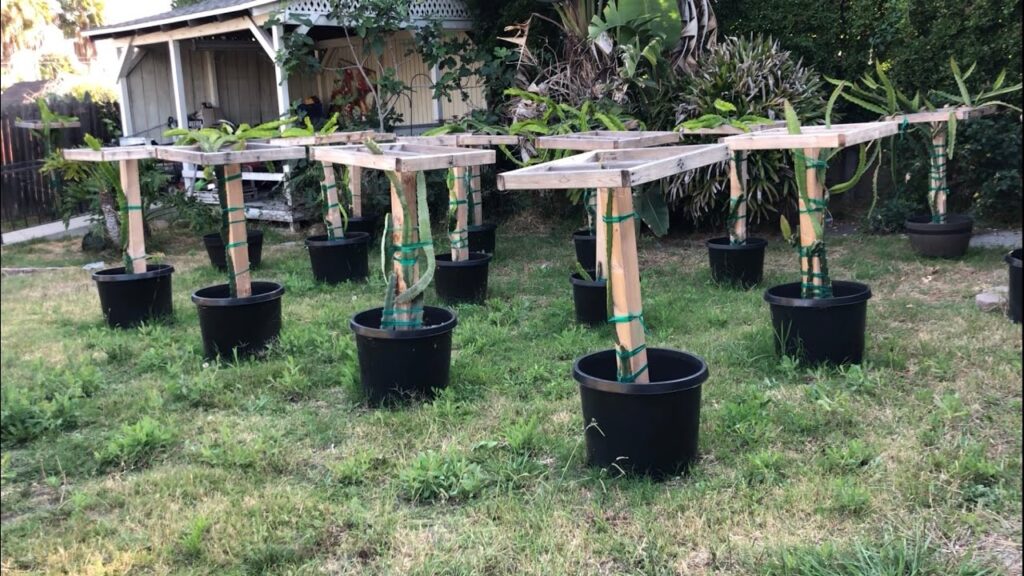In this comprehensive guide, we delve into how to grow dragon fruit in pots, navigating the terrain of container gardening with finesse and expertise. The allure of this exotic fruit, coupled with the convenience of pot culture, beckons both novice and seasoned gardeners alike. Embarking on the journey of cultivating dragon fruit in pots reveals a realm of horticultural possibilities.
Grow Dragon Fruit in Pot

Table of Contents
Understanding Dragon Fruit
1. Botanical Insight
Dragon fruit, also known as pitaya or pitahaya, belongs to the genus Hylocereus within the family Cactaceae. Its unique epiphytic nature and tropical origins characterize its growth habits, making it an ideal candidate for container cultivation.
2. Varieties and Hybrids
From the luscious white-fleshed Hylocereus undatus to the vibrant red-fleshed Hylocereus polyrhizus, dragon fruit enthusiasts can choose from a plethora of varieties and hybrids, each with its own distinct flavor profile and visual appeal.
Selecting the Perfect Pot
1. Size Matters
When it comes to growing dragon fruit in pots, size indeed matters. Opt for pots with a minimum diameter of 16-18 inches, providing ample room for root development and stability.
2. Material Considerations
Choose pots made of durable materials such as terracotta, ceramic, or plastic. Each material offers unique benefits, from moisture retention to breathability, catering to the specific needs of dragon fruit cultivation.
Potting Mix and Soil Composition
1. Well-Draining Blend
Crafting the perfect potting mix sets the stage for thriving dragon fruit. Blend equal parts of cactus potting mix, perlite, and coarse sand to ensure optimal drainage and aeration.
2. pH Preference
Dragon fruit thrives in slightly acidic to neutral soil pHs (6.0–7.0). Regular soil testing and pH adjustments with amendments like peat moss or pine bark fines foster an optimal growing environment.

Planting Techniques
1. Rooting Cuttings
Embark on the propagation journey by rooting dragon fruit cuttings. Select healthy stem segments and allow them to callus for a few days before planting them at a 45-degree angle in the potting mix.
2. Spacing Considerations
Maintain a distance of at least 12–18 inches between multiple cuttings to prevent overcrowding and promote airflow, mitigating the risk of fungal diseases.
Providing Optimal Growing Conditions
1. Sunlight Requirements
Dragon fruit thrives in full sun, basking in 6–8 hours of direct sunlight daily. Position pots in south-facing locations or provide supplemental grow lights to mimic tropical conditions.
2. Temperatures Tolerance
While dragon fruit relishes warm temperatures, it’s essential to shield it from extreme heat or frost. Maintain temperatures above 50°F (10°C) during the growing season, ensuring frost protection during colder months.
Watering and Moisture Management
1. Moderation is Key
Exercise restraint when watering dragon fruit, allowing the top inch of soil to dry out between waterings. Overwatering poses a significant risk, leading to root rot and other moisture-related issues.
2. Seasonal Adjustments
Tailor watering frequency to seasonal fluctuations, reducing water intake during dormant periods in winter and increasing it during the active growing season in spring and summer.
Fertilization Regimen
1. Balanced Nutrition
Feed dragon fruit with a balanced, water-soluble fertilizer formulated for cacti and succulents. Apply fertilizer at half strength every 4-6 weeks during the growing season to support robust growth and fruit development.
2. Micronutrient Boost
Supplement regular fertilization with micronutrients like iron, magnesium, and zinc to address potential deficiencies and bolster overall plant health.

Training and Support Structures
1. Encouraging Vertical Growth
As dragon fruit vines mature, provide sturdy support structures such as trellises, stakes, or pergolas to promote vertical growth and prevent sprawling.
2. Pruning Practices
Implement strategic pruning to maintain compact growth, remove damaged or diseased branches, and encourage prolific flowering and fruiting.
Pollination and Fruit Set
1. Natural Pollinators
Dragon fruit flowers rely on nocturnal pollinators like bats and moths for fertilization. Encourage natural pollination by planting fragrant night-blooming flowers nearby.
2. Hand Pollination
Without natural pollinators, facilitate hand pollination by gently transferring pollen between flowers using a soft brush or cotton swab, enhancing fruit set and yield.
Harvesting and Enjoying the Fruits of Labour
1. Signs of Ripeness
Determine fruit ripeness by observing colour changes, firmness, and aroma. Ripe dragon fruit exhibits vibrant skin coloration, a slight yield to gentle pressure, and a sweet, floral fragrance.
2. Culinary Creativity
Indulge in the culinary delights of freshly harvested dragon fruit, incorporating it into smoothie bowls, fruit salads, desserts, and refreshing beverages.
Conclusion
Cultivating dragon fruit in pots transcends mere gardening—it embodies a harmonious fusion of art and science. The journey unfolds with tender care and meticulous attention, from pot selection and soil preparation to nurturing growth and reaping bountiful harvests. As dragon fruit enthusiasts embark on this botanical odyssey, they embark on a transformative voyage—one that celebrates the boundless potential of container gardening and the vibrant allure of this exotic fruit.
